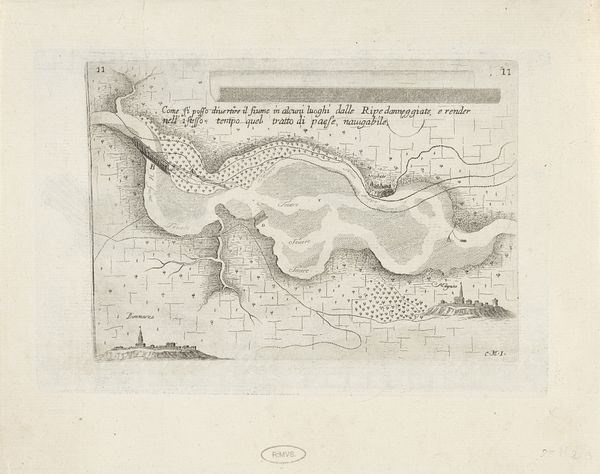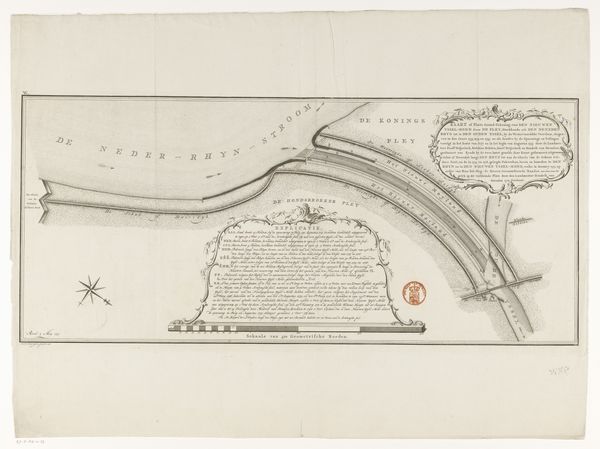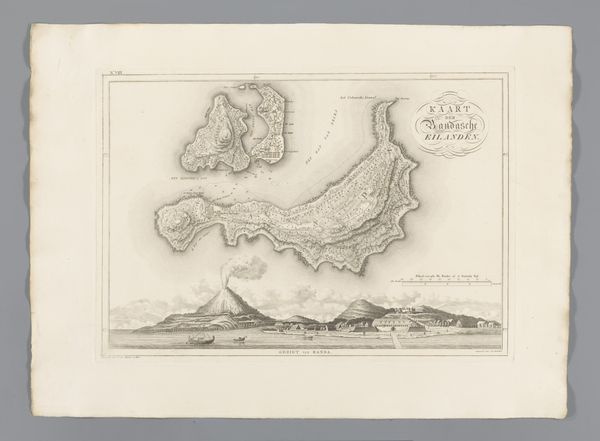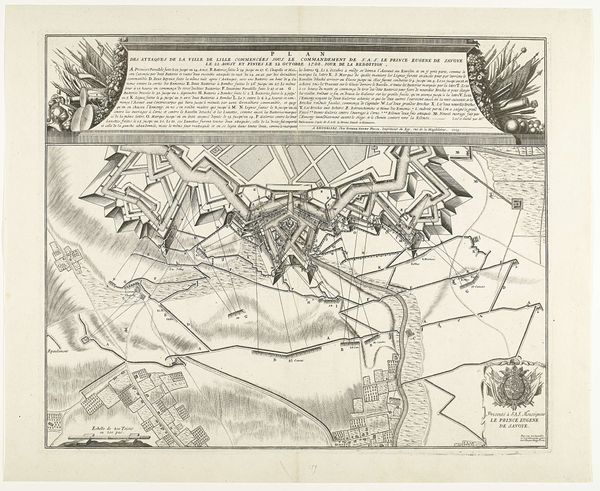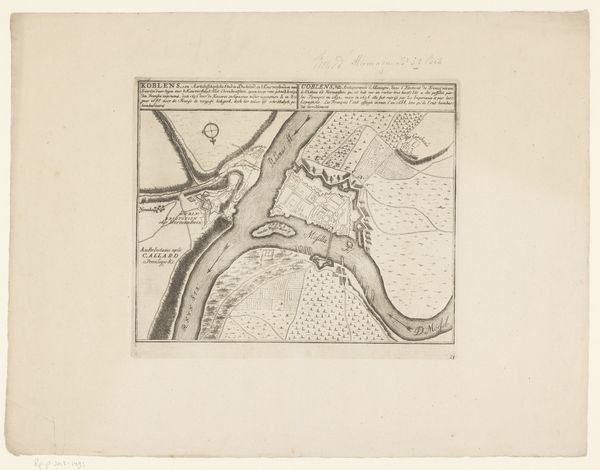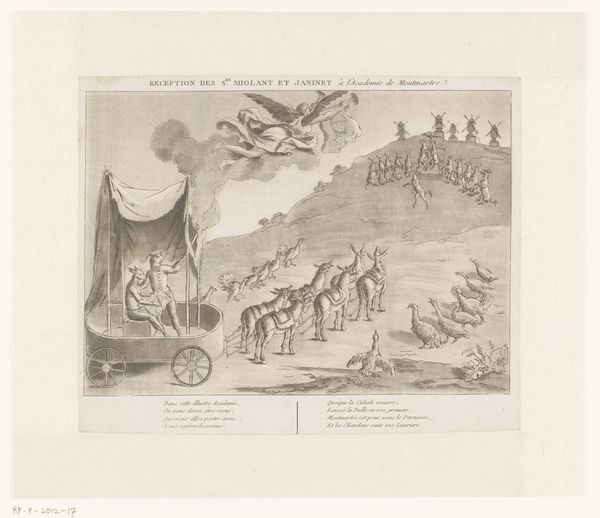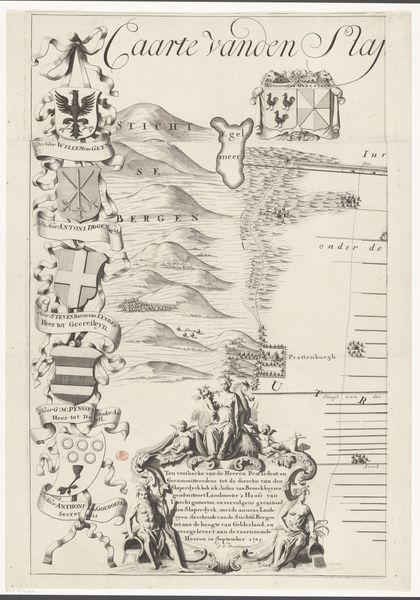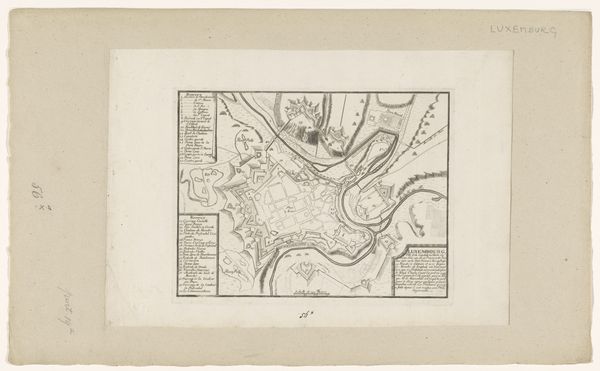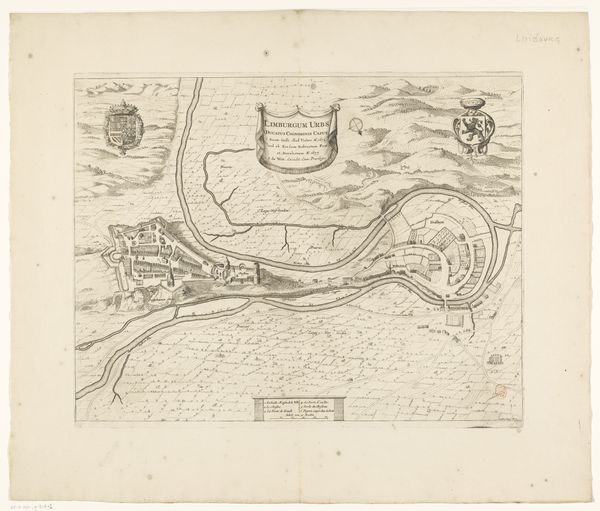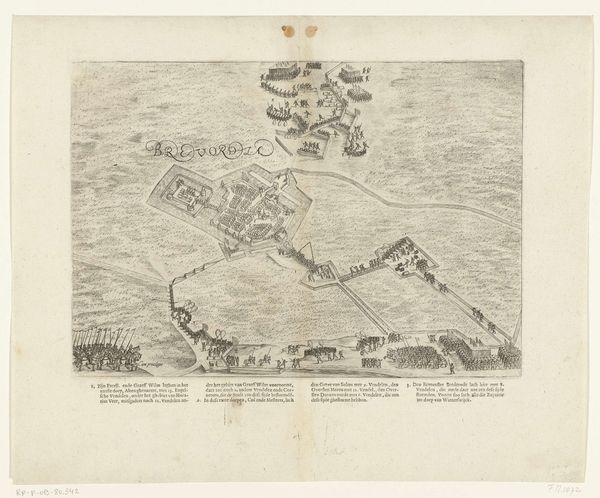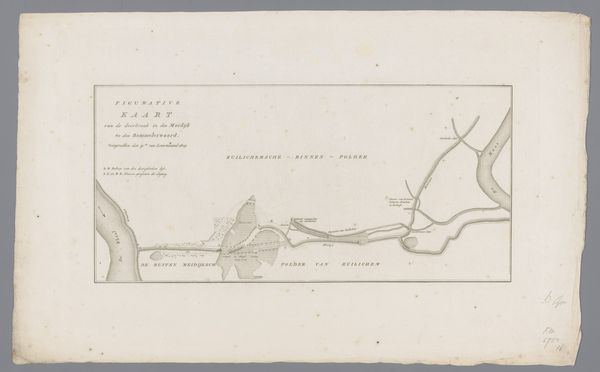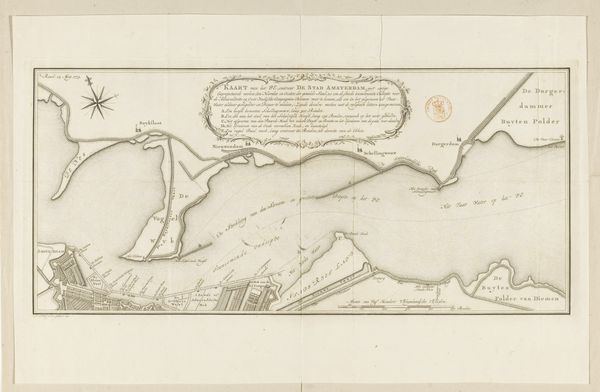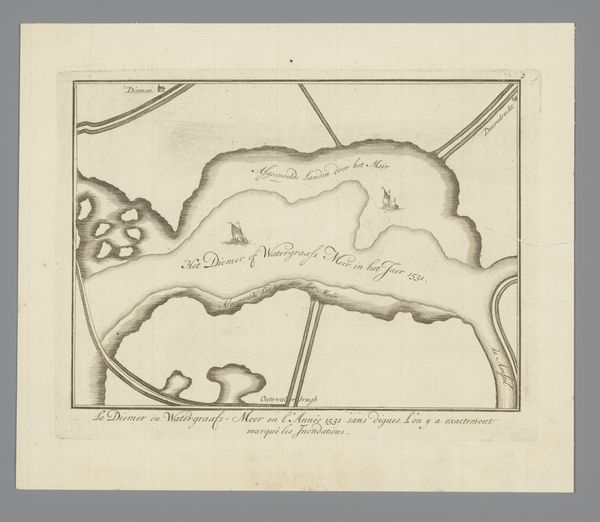
drawing, print, etching
#
drawing
# print
#
etching
#
pencil sketch
#
old engraving style
#
landscape
#
river
#
romanticism
#
cityscape
Dimensions: height 328 mm, width 712 mm
Copyright: Rijks Museum: Open Domain
Curator: Before us is Jean Nicolas Ponsart’s "Kaart van het Ahrtal met twintig gezichten op de omgeving," created around 1840. It is currently held at the Rijksmuseum, executed using etching, drawing and printing techniques. What is your immediate response? Editor: An cartographic exercise, clearly. Immediately, I'm drawn to the textures and the rendering of landscape, especially how the winding river becomes the spine of this work's composition. It appears both meticulous and slightly idealized. Curator: It certainly is that, the idealized aspect may stem from its roots within Romanticism. However, considering the labor-intensive process of etching—preparing the plate, the physical act of carving the image, and finally printing—one must acknowledge the tangible effort embedded in its creation. The hand of the artist is deeply present. Editor: That interplay between cartography and twenty surrounding views speaks to the growing commercial availability of picturesque tourism, in addition to etching's relative replicability. How many hands were on deck, exactly? The relationship between publisher and printmaker in early 19th-century Germany must have structured not only production but reception as well. Curator: The twenty surrounding vignettes definitely contribute to a certain structure; each landscape framed, catalogued, almost scientific in their precision. And indeed, mass reproduction had significant impact, shifting the artist's role from craftsman to something else, but at the base is still manual labour. The scale of production doesn't remove human toil. Editor: So true, consider that these printed sheets were then distributed to travelers, perhaps hand-tinted to create personalized keepsakes. A further augmentation of value... By presenting landscapes both precisely surveyed in the center and picturesquely depicted around it, it reveals anxieties of early cartography with pictorial depiction. How much of one can appear inside the other? Curator: The very fact that Ponsart intertwined both aspects is evidence enough. Thank you. It gives us a way to study both forms. Editor: Agreed, that consideration allows us to recognize value on two planes, both the artistic and its place of labor in society.
Comments
No comments
Be the first to comment and join the conversation on the ultimate creative platform.

